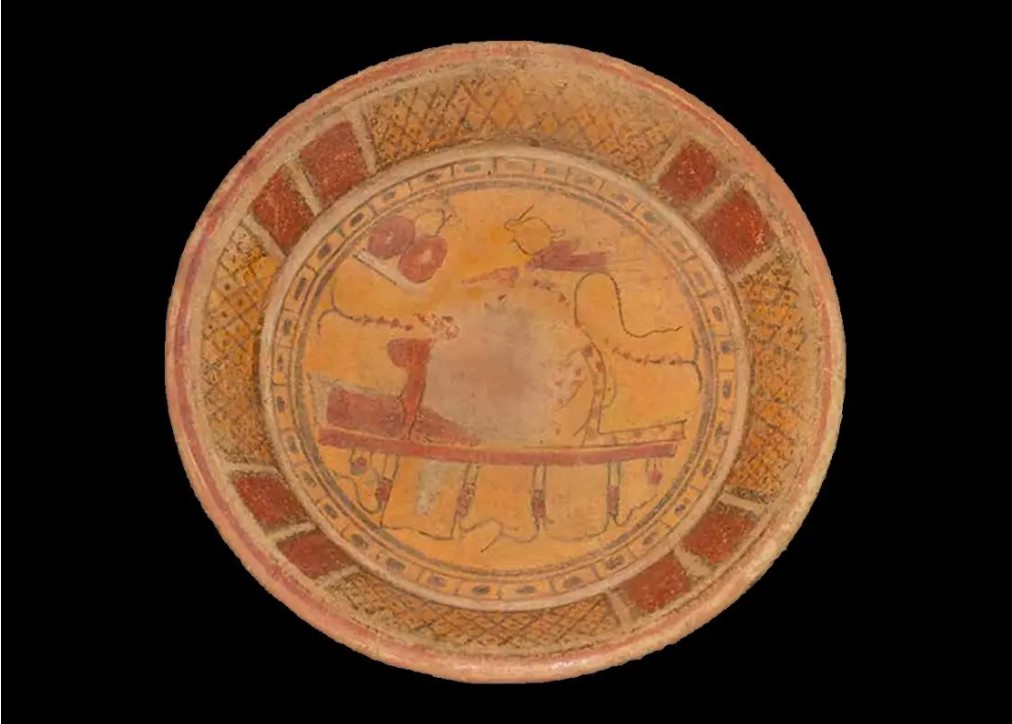Archaeological Discovery: Maya Dish Unveils Wahyis Protective Spirit
Archaeologists hailing from the National Institute of Anthropology and History (INAH) have recently unveiled a remarkable Maya dish that portrays a protective spirit known as “wahyis.” This discovery emerged during excavations at Cansacbé, nestled within Mexico’s Campeche state, and sheds light on the supernatural beliefs of the ancient Maya civilization.
The dish, meticulously placed within a burial site as a reverential offering, showcases the wahyis protective spirit—an auxiliary ethereal entity closely associated with the Maya elite. These spirits, referred to as “wahyaw” in Classic Maya inscriptions, were denoted as shamans, enchanters, or naguals. Intriguingly, the wahyis spirit was believed to reside within its owner during the day, but at night, while the owner slept, it could project its essence into diverse supernatural phenomena such as animals, comets, wind, and lightning.
“Way,” which originates from the Mayan languages, forms the foundation for “dream” and is linked to an array of meanings encompassing witchcraft, transformation, and companion spirits. Scholars Christophe Helmke and Jesper Nielsen propose that these wahyi entities potentially personify afflictions from the netherworld, which could be manipulated and transmitted to others.
A noteworthy testament to the association between wahyis and personified illnesses is found within the “El Ritual de los Bacabes,” a Yukatek colonial manuscript from the late 18th century that may be a reproduction of an earlier codex. This manuscript comprises 68 sections featuring incantations, supplications, and medicinal formulas aimed at curing ailments. These maladies are depicted as sentient beings, susceptible to the healer’s guidance, who endeavors to expel them from the afflicted person’s body. The names assigned to these illnesses offer insight into the forms they are believed to assume, resembling creatures like monkeys, deer, jaguars, birds, insects, and snakes.
The recently discovered Cansacbé dish portrays a seated representation of a jaguar or a human adorned in jaguar skin, encircled by boxes symbolizing turtle shells. This imagery aligns with ceramic artifacts dating back to the Late Classic period (AD 600 to 900).
The intriguing artifact was unearthed during the construction of Section 2 of the Mayan Train. Notably, earlier excavations in the 1990s had already uncovered remains of two palace-like structures within Cansacbé’s archaeological zone. This finding adds a new layer to our understanding of the Maya worldview and their intricate belief systems that intertwined the realms of the natural and supernatural.




